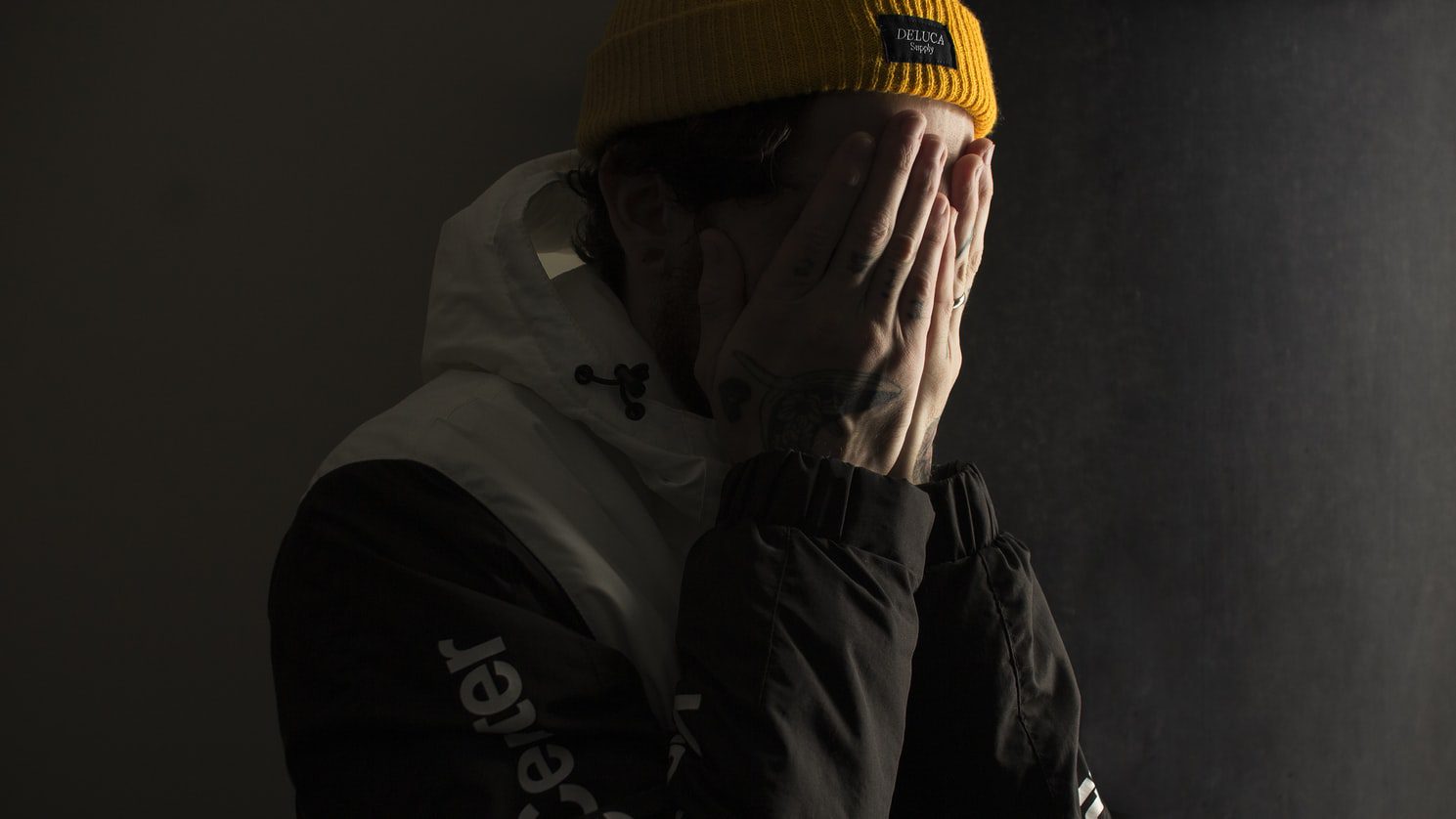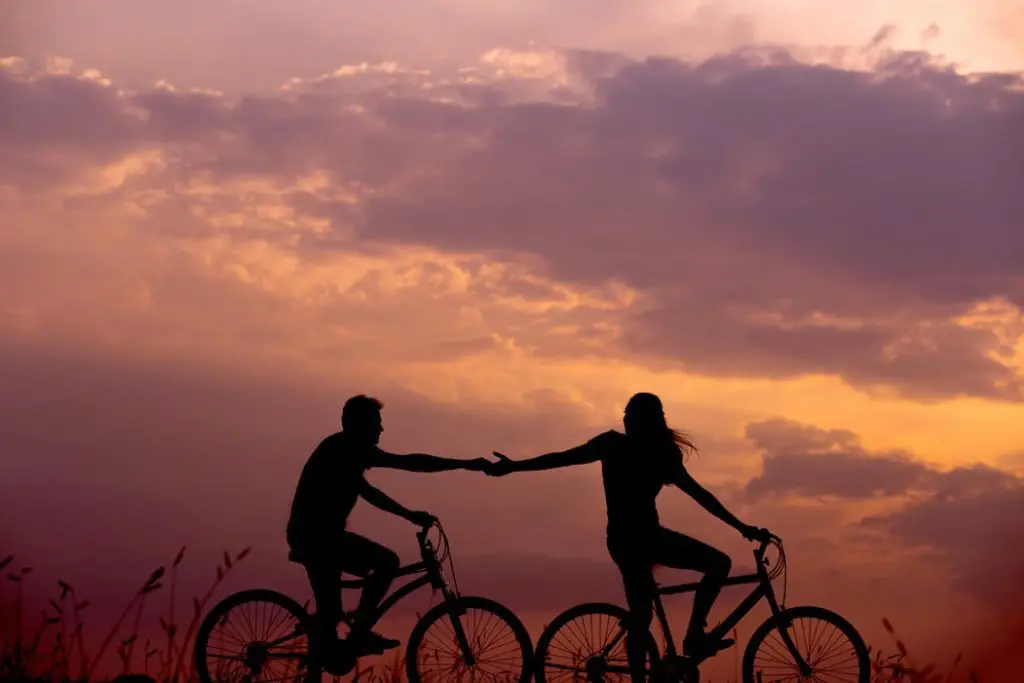[fusion_builder_container admin_label=”Large Screen text” hundred_percent=”no” hundred_percent_height=”no” hundred_percent_height_scroll=”no” hundred_percent_height_center_content=”yes” equal_height_columns=”no” hide_on_mobile=”small-visibility,medium-visibility,large-visibility” status=”published” class=”@media only screen and ( min-width: 800px ) {padding-top: 0px; padding-right: 5px; padding-bottom: 0px; padding-left: 5px; }” border_style=”solid” padding_right=”0%” padding_left=”7%” gradient_start_position=”0″ gradient_end_position=”100″ gradient_type=”linear” radial_direction=”center center” linear_angle=”180″ background_position=”center center” background_repeat=”no-repeat” fade=”no” background_parallax=”none” enable_mobile=”no” parallax_speed=”0.3″ background_blend_mode=”none” video_aspect_ratio=”16:9″ video_loop=”yes” video_mute=”yes” filter_hue=”0″ filter_saturation=”100″ filter_brightness=”100″ filter_contrast=”100″ filter_invert=”0″ filter_sepia=”0″ filter_opacity=”100″ filter_blur=”0″ filter_hue_hover=”0″ filter_saturation_hover=”100″ filter_brightness_hover=”100″ filter_contrast_hover=”100″ filter_invert_hover=”0″ filter_sepia_hover=”0″ filter_opacity_hover=”100″ filter_blur_hover=”0″ flex_column_spacing=”0px” type=”legacy”][fusion_builder_row][fusion_builder_column type=”1_1″ layout=”1_1″ spacing=”” center_content=”no” link=”” target=”_self” min_height=”” hide_on_mobile=”small-visibility,medium-visibility,large-visibility” class=”” id=”” background_color=”” background_image=”” background_image_id=”” background_position=”left top” background_repeat=”no-repeat” hover_type=”none” border_color=”” border_style=”solid” border_position=”all” border_radius=”” box_shadow=”no” dimension_box_shadow=”” box_shadow_blur=”0″ box_shadow_spread=”0″ box_shadow_color=”” box_shadow_style=”” padding_top=”” padding_right=”” padding_bottom=”” padding_left=”0px” margin_top=”” margin_bottom=”” animation_type=”” animation_direction=”left” animation_speed=”0.3″ animation_offset=”” last=”true” first=”true” border_sizes_top=”0px” border_sizes_bottom=”0px” border_sizes_left=”0px” border_sizes_right=”0px” type=”1_1″][fusion_text columns=”” column_min_width=”” column_spacing=”” rule_style=”default” rule_size=”” rule_color=”” hide_on_mobile=”small-visibility,medium-visibility,large-visibility” class=”” id=”” animation_type=”” animation_direction=”left” animation_speed=”0.3″ animation_offset=””]
[/fusion_text][fusion_text columns=”” column_min_width=”” column_spacing=”” rule_style=”default” rule_size=”” rule_color=”” hide_on_mobile=”small-visibility,medium-visibility,large-visibility” class=”” id=”” animation_type=”” animation_direction=”left” animation_speed=”0.3″ animation_offset=””]
Reasons it’s hard to be vulnerable that you need to overcome.
Maybe you understand the benefits of being vulnerable. Perhaps you even want to be more vulnerable in your life, but something’s stopping you. What is it?
I’d wager to guess that it’s not just one thing stopping you, but many. Our society has created a barrage of obstacles that make it hard to be vulnerable. The first step to overcoming them, then, is to acknowledge them.
For any sports fans out there, it’s kind of like scouting the other team before a game. You need to know your opponents’ main threats before you can alter your defense and try to shut them down. (Or, for a non-sport reference, it’s like being prepared to defend yourself against your mother’s onslaught of passive-aggressive criticisms).
The sooner you can recognize why it’s hard to be vulnerable, the sooner you can overcome these challenges.
.
What is vulnerability
Vulnerability is our willingness to take risks and expose ourselves emotionally to others, even when we don’t know the outcome of our actions.
Being vulnerable is necessary if you want to build and maintain meaningful connections in your life. It’s also essential for self-growth and self-worth. If anybody ever says they don’t need to be vulnerable to be happy, they are dearly mistaken. (And you should promptly alert them to this fact… or send them my direction so I can.)
Vulnerability can look like many different things. It can be confessing your desire to do something, or it might be expressing a fear or shame you have. Being vulnerable can be big or little actions; regardless of the size, you just have to be opening yourself up to the uncertainty of the response.
Being vulnerable in relationships isn’t easy, but you need to let yourself be vulnerable to be happy.
.
Who is Brené Brown Vulnerability Expert?
Brené Brown is the leading research on what vulnerability means and how to be vulnerable. She started a revolution when her first Ted Talk, The Power of Vulnerability, went viral. Since then, she has helped educate people on the importance of being vulnerable.
Popular Brené Brown vulnerability quotes include:
“Vulnerability is not winning or losing; it’s having the courage to show up and be seen when we have no control over the outcome. Vulnerability is not weakness; it’s our greatest measure of courage.”
“Vulnerability is the birthplace of innovation, creativity, and change.”
“Judging has become such a part of our thinking patterns that we are rarely even aware of why and how we do it. It takes a great deal of conscious thinking or mindfulness to even bring the habit of judging into our awareness.”
If you want to increase your understanding of what vulnerability means, and how to be vulnerable in your life, Brené Brown is 100% the expert you want to turn to. Her books Braving the Wilderness, The Gifts of Imperfections, and Daring Greatly have literally transformed my perspective on life, self-love, and relationships. If you want to increase your vulnerability in leadership, you’ll want to check out Dare to Lead.
.
[/fusion_text][fusion_code]PHNjcmlwdCB0eXBlPSJ0ZXh0L2phdmFzY3JpcHQiPgphbXpuX2Fzc29jX3BsYWNlbWVudCA9ICJhZHVuaXQwIjsKYW16bl9hc3NvY190cmFja2luZ19pZCA9ICJteXF1ZXN0aW9ubGlmLTIwIjsKYW16bl9hc3NvY19hZF9tb2RlID0gIm1hbnVhbCI7CmFtem5fYXNzb2NfYWRfdHlwZSA9ICJzbWFydCI7CmFtem5fYXNzb2NfbWFya2V0cGxhY2UgPSAiYW1hem9uIjsKYW16bl9hc3NvY19yZWdpb24gPSAiVVMiOwphbXpuX2Fzc29jX2xpbmtpZCA9ICI1MWFmYzE5ZTQ3ZWZhYWZlOWNmM2YzMjMxOWJmMDg3MCI7CmFtem5fYXNzb2NfYXNpbnMgPSAiMTU5Mjg1ODQ5WCwxNTkyNDA4NDE5LDAzOTk1OTI1MjAsMDgxMjk4NTgxOCwxNTkyNDAzMzUyLDA4MTI5ODU4MFgiOwphbXpuX2Fzc29jX3NlYXJjaF9iYXIgPSAidHJ1ZSI7CmFtem5fYXNzb2NfdGl0bGUgPSAiQnJlbsOpIEJyb3duIEJvb2tzIjsKPC9zY3JpcHQ+CjxzY3JpcHQgc3JjPSIvL3otbmEuYW1hem9uLWFkc3lzdGVtLmNvbS93aWRnZXRzL29uZWpzP01hcmtldFBsYWNlPVVTIj48L3NjcmlwdD4=[/fusion_code][fusion_text columns=”” column_min_width=”” column_spacing=”” rule_style=”default” rule_size=”” rule_color=”” hide_on_mobile=”small-visibility,medium-visibility,large-visibility” class=”” id=”” animation_type=”” animation_direction=”left” animation_speed=”0.3″ animation_offset=””]
.
Vulnerability Collection: Learn How to Be Vulnerable
Don’t want to commit to a whole book? Check out more blog posts to teach yourself all about vulnerability and why it’s the missing key to a meaningful, purpose-driven life. This post is one of four in my “Vulnerability Collection.”
Learn more about the myths of vulnerability, the benefits of vulnerability, how to be more vulnerable in your everyday life, and why vulnerability is necessary to improve your self-awareness:
- Myths of Vulnerability
- Benefits of Vulnerability
- Ways to Be More Vulnerable in Your Everyday Life
- Why Vulnerability and Self-Awareness are Necessary for Self-Growth
.
7 Reasons It’s Hard to Be Vulnerable
Everyone has their own stories and challenges. However, these 9 reasons it’s hard to be vulnerable are universal for almost everyone. As you read them, consider if each reason plays a role in your life.
1. Shame
Shame is the number one reason we hold back from being vulnerable. It is a fundamental human emotion that has extreme consequences on our mental health (and, as a result, physical health). When we feel shame, we are viewing our entire selves in a negative light. (This is different than guilt, in which we feel bad about our actions due to their effects on others).
Shame most often occurs when we feel like we’ll be rejected for who we are. Therefore, being vulnerable opens us up to feeling exposed and humiliated.
The real kicker is, we can’t always control shame because it’s a reflexive emotion. Because of this, we need to focus our attention on building our resilience against shame. Leading shame researcher Brené Brown talks about fighting the “trapped, isolated, and powerless” feelings that come from shame with “empathy, connection, power, and freedom.”
It’s hard to be vulnerable when we feel shame, but being vulnerable and connecting with others is actually what we need to overcome it.
.
2. Our fear of not belonging
We are wired to need connections with others. Because this need to connect is so pressing, we sometimes sidestep vulnerability in an attempt to maintain our relationships. We’re too afraid that we’ll be rejected if we open up and lose a person in our life.
This fear of not belonging can make us feel like the risk of vulnerability is not worth taking. As a result, we fall short with vulnerability in a relationship.
When we feel these fears, we need to remember that “fitting in” is not the same thing as true belonging. Belonging only happens when we’re willing to present our authentic selves to others. Namely, when we’re willing to be vulnerable.
It can seem like a paradox that we need to be vulnerable to belong; then, because we need to belong, we’re afraid to be vulnerable in a relationship. Try to recognize this fear and understand that it’s not beneficial to you.
.
3. Gendered expectations
As much as society has progressed in terms of gender equality, there are still potent gender expectations that permeate our culture. Going against these societal norms can trigger shame and rejection.
As a result, it’s hard to be vulnerable when you fall outside of these gendered expectations.
For women, our society still creates an image of the perfect, feminine woman: thin, small, quiet, and likable. For men, the overarching message is that they should not demonstrate any weakness or emotions. Vulnerability is particularly hard for men, as vulnerability is misperceived as weakness. However, for anybody, going against societal gender expectations can make it extremely hard to be vulnerable.
We need to be aware of these cultural stereotypes and how damaging they can be.
.
4. Previous experiences and traumas
It’s no surprise that previous experiences and traumas can have a massive effect on one’s ability with how to be vulnerable. In particular, if we’ve tried to be vulnerable in the past and it’s burned us, we’re going to be afraid to try again.
As impactful as our past can be on our emotional patterns, we need to identify when it is getting in the way of being vulnerable. We also need to look to the future and not get stuck in the past.
Vulnerability is really difficult for me in my relationship with my fiancé (as it is for many people). One time, I took a leap of courage and made myself very vulnerable. Shortly after, an ensuing conflict left me feeling pretty hurt and exposed. My natural reaction was to reign in my vulnerability in an attempt at self-protection.
Often it’s hard to be vulnerable because we’re protecting ourselves from past hurt. However, these lingering protective measures won’t serve us in the long run.
.
5. Lack of self-awareness
The link between self-awareness and acts of vulnerability are closely tied. After all, being vulnerable is exposing your inner emotions and thoughts to others. Recognizing these things in ourselves is incredibly complicated for many reasons (including outdated brain wiring, patterns, and the scarcity mindset, to name a few).
If you aren’t self-aware, you won’t know what your authentic self is that you’re trying to expose.
Many of us go through life throwing out ideas or thoughts in conversations (some of us, a bit too much more than others). We need to understand that being vulnerable is more than just sharing passing whims. Real vulnerability requires you to understand yourself and share that self with the world. Unfortunately, the majority of people lack self-awareness.
Self-awareness is something you can develop to make it not so hard to be vulnerable.
Want to see how self-aware you really are? Take this free self-awareness test to assess your self-awareness. These 20 questions can jumpstart your self-growth and help you be more vulnerable.
6. The myth that vulnerability is a weakness
There are many myths surrounding vulnerability, but the most influential one is that vulnerability is a weakness. People falsely label emotional talk as weak (although we know the opposite is true).
It’s hard to be vulnerable when you think everyone around you will view it as weakness.
As strong as this fear might seem, it’s actually inaccurate. Turns out, according to a recent study, that we judge ourselves much more harshly than we do others. That means that we actually respect when someone else is vulnerable, despite feeling like we’ll be judged when we are.
We need to fight against this myth both in our thinking and our actions. Only with more acts of vulnerability will we be able to prove to ourselves that it’s not a weakness like we initially feared.
.
7. Uncertainty of others’ reactions
The part that makes vulnerability risky is that we can’t be sure how other people will react to us. I mean, if we could predict every reaction, it wouldn’t be tough to do, now would it?
Our need for control and certainty makes it hard to be vulnerable.
Humans are natural storytellers; even subconsciously, our brains like to fill in gaps of stories with our imaginations. When we think of being vulnerable, we don’t know what happens at the end of the story. Usually, we default to the worst: they won’t accept me, they’ll laugh at me, they’ll judge me. Even if we don’t go this far, however, it’s still uncomfortable not to know the outcome.
The more we can embrace the discomfort of uncertainty, the better off we’ll be in the long run.
.
Conclusion
Being vulnerable has enormous benefits for ourselves and our relationships. Still, too often, we avoid being vulnerable. Why is this?
Many obstacles make it hard for us to be vulnerable, including:
- Shame
- Our fear of not belonging
- Gendered expectations
- Previous experiences and traumas
- Lack of self-awareness
- The myth that vulnerability is a weakness
- Uncertainty of others’ reactions
The first step to overcoming these obstacles is to name them and identify how they are affecting you. Strong emotions like shame and fear have a tendency to cloud our judgment. Then, we’re left with all the emotions but none of the answers.
By understanding what makes it hard to vulnerable, we can begin to tackle these barriers one by one. Eventually, this will help us start to be vulnerable in our everyday lives.
Start tackling these obstacles today by looking within yourself and finding the courage to answer a question below. If you’re not sure you want to post a public comment, send me a private email – I’ll always reply!
.
[/fusion_text][/fusion_builder_column][/fusion_builder_row][/fusion_builder_container][fusion_global id=”3654″][fusion_builder_container admin_label=”Large Screen follow-up” hundred_percent=”no” hundred_percent_height=”no” hundred_percent_height_scroll=”no” hundred_percent_height_center_content=”yes” equal_height_columns=”no” hide_on_mobile=”small-visibility,medium-visibility,large-visibility” status=”published” border_style=”solid” padding_right=”25″ padding_left=”25″ gradient_start_position=”0″ gradient_end_position=”100″ gradient_type=”linear” radial_direction=”center center” linear_angle=”180″ background_color=”#000000″ background_position=”center center” background_repeat=”no-repeat” fade=”no” background_parallax=”none” enable_mobile=”no” parallax_speed=”0.3″ background_blend_mode=”none” video_aspect_ratio=”16:9″ video_loop=”yes” video_mute=”yes” filter_hue=”0″ filter_saturation=”100″ filter_brightness=”100″ filter_contrast=”100″ filter_invert=”0″ filter_sepia=”0″ filter_opacity=”100″ filter_blur=”0″ filter_hue_hover=”0″ filter_saturation_hover=”100″ filter_brightness_hover=”100″ filter_contrast_hover=”100″ filter_invert_hover=”0″ filter_sepia_hover=”0″ filter_opacity_hover=”100″ filter_blur_hover=”0″ border_sizes_top=”0px” border_sizes_bottom=”0px” border_sizes_left=”0px” border_sizes_right=”0px” type=”legacy”][fusion_builder_row][fusion_builder_column type=”1_1″ layout=”1_1″ spacing=”” center_content=”no” link=”” target=”_self” min_height=”” hide_on_mobile=”small-visibility,medium-visibility,large-visibility” class=”” id=”” background_color=”” background_image=”” background_image_id=”” background_position=”left top” background_repeat=”no-repeat” hover_type=”none” border_color=”” border_style=”solid” border_position=”all” border_radius=”” box_shadow=”no” dimension_box_shadow=”” box_shadow_blur=”0″ box_shadow_spread=”0″ box_shadow_color=”” box_shadow_style=”” padding_top=”” padding_right=”” padding_bottom=”” padding_left=”” margin_top=”” margin_bottom=”” animation_type=”” animation_direction=”left” animation_speed=”0.3″ animation_offset=”” last=”true” first=”true” border_sizes_top=”0px” border_sizes_bottom=”0px” border_sizes_left=”0px” border_sizes_right=”0px” type=”1_1″][fusion_title hide_on_mobile=”small-visibility,medium-visibility,large-visibility” class=”” id=”” content_align=”center” size=”1″ font_size=”” line_height=”” letter_spacing=”3px” margin_top=”5px” margin_bottom=”-40px” margin_top_mobile=”” margin_bottom_mobile=”” text_color=”#ffffff” style_type=”double solid” sep_color=”#0220ff” margin_top_small=”” margin_bottom_small=””]
FOLLOW-UP QUESTIONS
[/fusion_title][fusion_text columns=”” column_min_width=”” column_spacing=”” rule_style=”default” rule_size=”” rule_color=”” hide_on_mobile=”small-visibility,medium-visibility,large-visibility” class=”” id=””]
Comment below with answers, ideas, and more questions, or contact me to collaborate on a future post!
[/fusion_text][fusion_builder_row_inner][fusion_builder_column_inner type=”1_2″ layout=”1_2″ spacing=”” center_content=”no” hover_type=”none” link=”” target=”_self” min_height=”” hide_on_mobile=”small-visibility,medium-visibility,large-visibility” class=”” id=”” background_color=”” background_image=”” background_position=”left top” background_repeat=”no-repeat” border_color=”” border_style=”solid” border_position=”all” border_radius=”” box_shadow=”no” dimension_box_shadow=”” box_shadow_blur=”0″ box_shadow_spread=”0″ box_shadow_color=”” box_shadow_style=”” padding_top=”” padding_right=”” padding_bottom=”” padding_left=”” dimension_margin=”” animation_type=”” animation_direction=”left” animation_speed=”0.3″ animation_offset=”” last=”false” first=”true” border_sizes_top=”0px” border_sizes_bottom=”0px” border_sizes_left=”0px” border_sizes_right=”0px” spacing_right=”” type=”1_2″][fusion_title hide_on_mobile=”small-visibility,medium-visibility,large-visibility” class=”” id=”” content_align=”center” size=”4″ font_size=”30px” line_height=”” letter_spacing=”1px” margin_top=”” margin_bottom=”-10px” margin_top_mobile=”” margin_bottom_mobile=”-10px” text_color=”#ffffff” style_type=”single dashed” sep_color=”#022cff” margin_top_small=”” margin_bottom_small=”-10px”]
EXPLORING YOURSELF
[/fusion_title][fusion_checklist icon=”fa-question-circle fas” iconcolor=”#0216f2″ circle=”no” circlecolor=”#e0e0e0″ size=”18px” divider=”yes” divider_color=”#ffffff” hide_on_mobile=”small-visibility,medium-visibility,large-visibility”][fusion_li_item icon=””]
Which reason resonates the most with you?
[/fusion_li_item][fusion_li_item icon=””]
When in your life have you been afraid to be vulnerable?
[/fusion_li_item][fusion_li_item icon=””]
Do you ever feel shame from not conforming to gender expectations?
[/fusion_li_item][/fusion_checklist][/fusion_builder_column_inner][fusion_builder_column_inner type=”1_2″ layout=”1_2″ spacing=”” center_content=”no” hover_type=”none” link=”” target=”_self” min_height=”” hide_on_mobile=”small-visibility,medium-visibility,large-visibility” class=”” id=”” background_color=”” background_image=”” background_position=”left top” background_repeat=”no-repeat” border_color=”” border_style=”solid” border_position=”all” border_radius=”” box_shadow=”no” dimension_box_shadow=”” box_shadow_blur=”0″ box_shadow_spread=”0″ box_shadow_color=”” box_shadow_style=”” padding_top=”” padding_right=”” padding_bottom=”” padding_left=”” dimension_margin=”” animation_type=”” animation_direction=”left” animation_speed=”0.3″ animation_offset=”” last=”true” first=”false” border_sizes_top=”0px” border_sizes_bottom=”0px” border_sizes_left=”0px” border_sizes_right=”0px” type=”1_2″][fusion_title hide_on_mobile=”small-visibility,medium-visibility,large-visibility” class=”” id=”” content_align=”center” size=”4″ font_size=”30px” line_height=”” letter_spacing=”1px” margin_top=”” margin_bottom=”-10px” margin_top_mobile=”” margin_bottom_mobile=”-10px” text_color=”#ffffff” style_type=”single dashed” sep_color=”#0220ff” margin_top_small=”” margin_bottom_small=”-10px”]
EXPANDING YOUR WORLD
[/fusion_title][fusion_checklist icon=”fa-question-circle fas” iconcolor=”#0216f2″ circle=”no” circlecolor=”#ffffff” size=”18px” divider=”yes” divider_color=”#ffffff” hide_on_mobile=”small-visibility,medium-visibility,large-visibility”][fusion_li_item icon=””]
Why is shame such a powerful and motivating emotion?
[/fusion_li_item][fusion_li_item icon=””]
How does a traumatic experience affect us psychologically?
[/fusion_li_item][fusion_li_item icon=””]
Have any governments or organizations taken steps to overcome these cultural obstacles?
[/fusion_li_item][/fusion_checklist][/fusion_builder_column_inner][/fusion_builder_row_inner][/fusion_builder_column][/fusion_builder_row][/fusion_builder_container]








